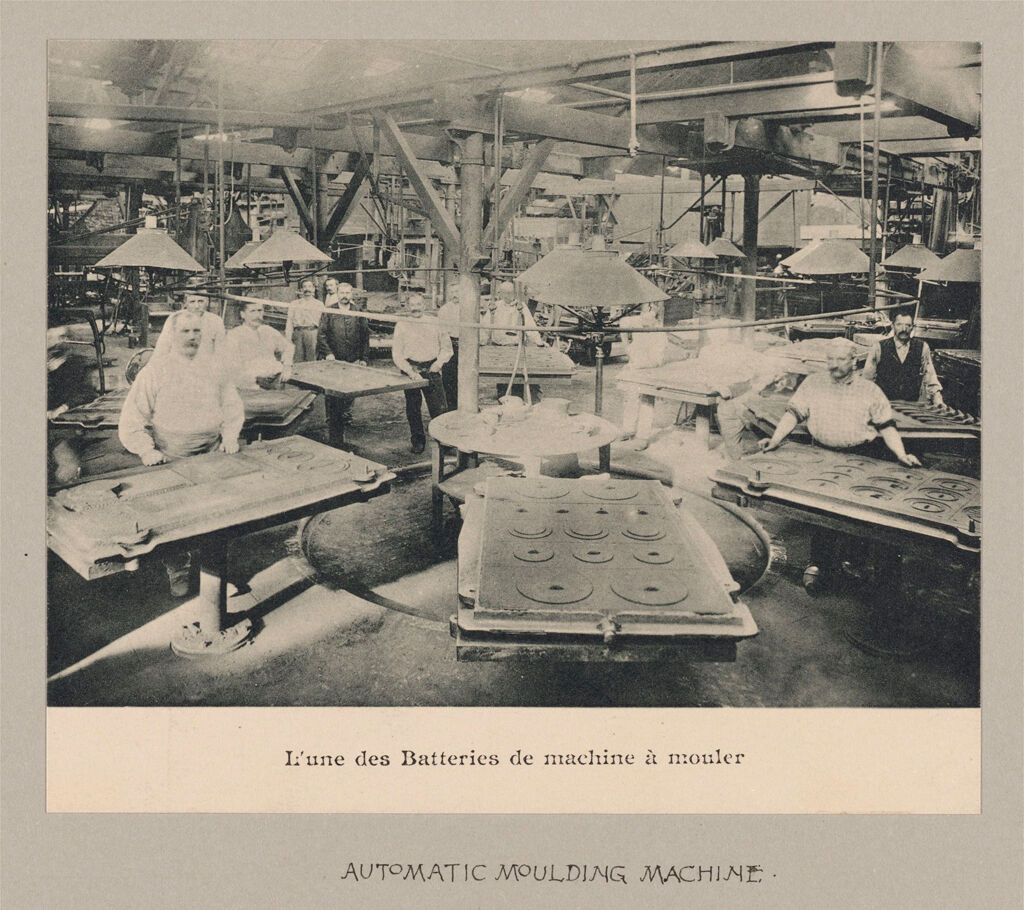The Familistère
Guise, France
Utopian Socialist
Co-Op
Single-Family Worker Housing
1856 - 1968
Guise, France
Utopian Socialist
Co-Op
Single-Family Worker Housing
1856 - 1968
1 Glazed courtyards 2 Fountains 3 Bathrooms and showers 4 School and Theatre 5 Bambinat 6 Restauran 7 Stables 8 Cafe 9 Workshhops
![1871 The Familistère. Plan: Drawn from General plan of the Familistère. National Library of France, Department of Philosophy, History, Human Sciences, R-37423]()
The most successful and enduring Fourierist experiment is the Familistère in Guise, France. In 1865, the stove manufacturer Jean-Baptiste André Godin, built his own Social Palace near his factory to improve the living conditions of his worker. Each family had a three-room apartment. Education was free, and hot water from the factory filled a public swimming pool. Children were taken care of in two Kindergartens (4), an “infant school” for toddlers and children up to age four, and a bambinat (5) for children ages four to six, allowing their mothers to work. Each of the three building blocks had a roofed courtyard (1) where children could play in all weather; gatherings, concerts, and festivities could take place all year long.
By 1872, close to 1,000 workers and their families were housed in the Familistère and in 1880 it was transformed into a worker-owned cooperative. The Familistère remained operational until 1968, when the cooperative association for the Social Palace was dissolved, and the apartments were sold. Today, the building complex, which is still partly inhabited, is protected as a historic monument and open to visitors. Museum, and the theatre is a Municipal Library (4).

The most successful and enduring Fourierist experiment is the Familistère in Guise, France. In 1865, the stove manufacturer Jean-Baptiste André Godin, built his own Social Palace near his factory to improve the living conditions of his worker. Each family had a three-room apartment. Education was free, and hot water from the factory filled a public swimming pool. Children were taken care of in two Kindergartens (4), an “infant school” for toddlers and children up to age four, and a bambinat (5) for children ages four to six, allowing their mothers to work. Each of the three building blocks had a roofed courtyard (1) where children could play in all weather; gatherings, concerts, and festivities could take place all year long.
By 1872, close to 1,000 workers and their families were housed in the Familistère and in 1880 it was transformed into a worker-owned cooperative. The Familistère remained operational until 1968, when the cooperative association for the Social Palace was dissolved, and the apartments were sold. Today, the building complex, which is still partly inhabited, is protected as a historic monument and open to visitors. Museum, and the theatre is a Municipal Library (4).










Fourierists End Notes
“The architecture of civilization bears the stamp of egoism, corruption, poverty and discord of society...The Association will create Her Architecture, and it will be one of combination and unity...When men will be associated and united, one great, elegant building will replace hundreds of isolated and miserable constructions of civilization” (Albert Brisbane)
Ungers, Liselotte, and Oswald Mathias Ungers. Kommunen in Der Neuen Welt: 1740-1971. Köln: Kiepenheuer & Witsch, 1972. Page 70.
Preucel, Robert W., and Steven R. Pendery. “Envisioning Utopia: Transcendentalist and Fourierist Landscapes at Brook Farm, West Roxbury, Massachusetts.” Historical Archaeology 40, no. 1 (2006): 6–19. http://www.jstor.org/stable/25617313. Page 15
Ibid, 15
Ungers, 71